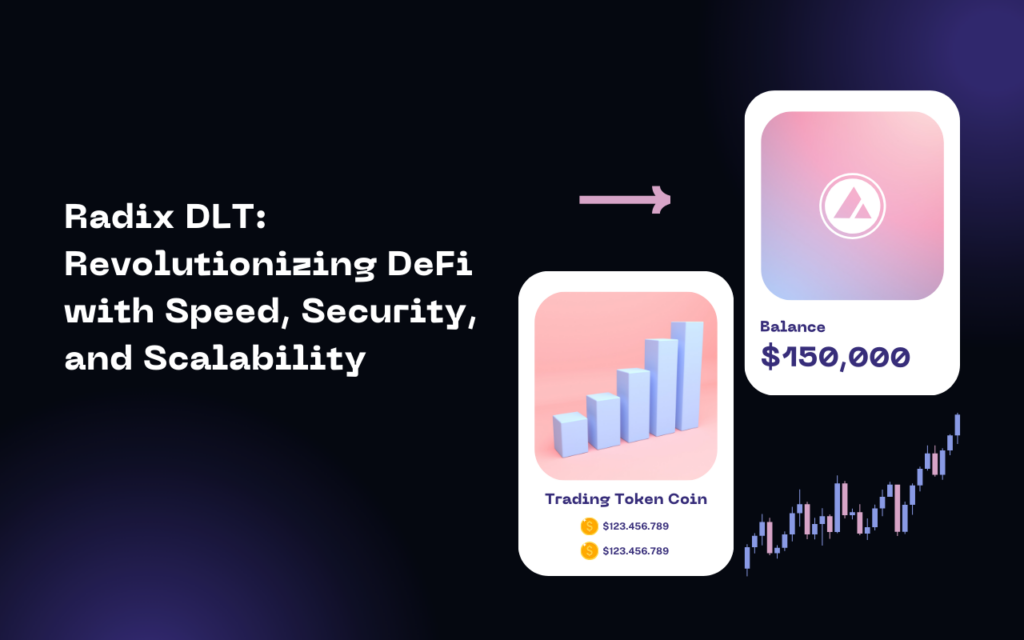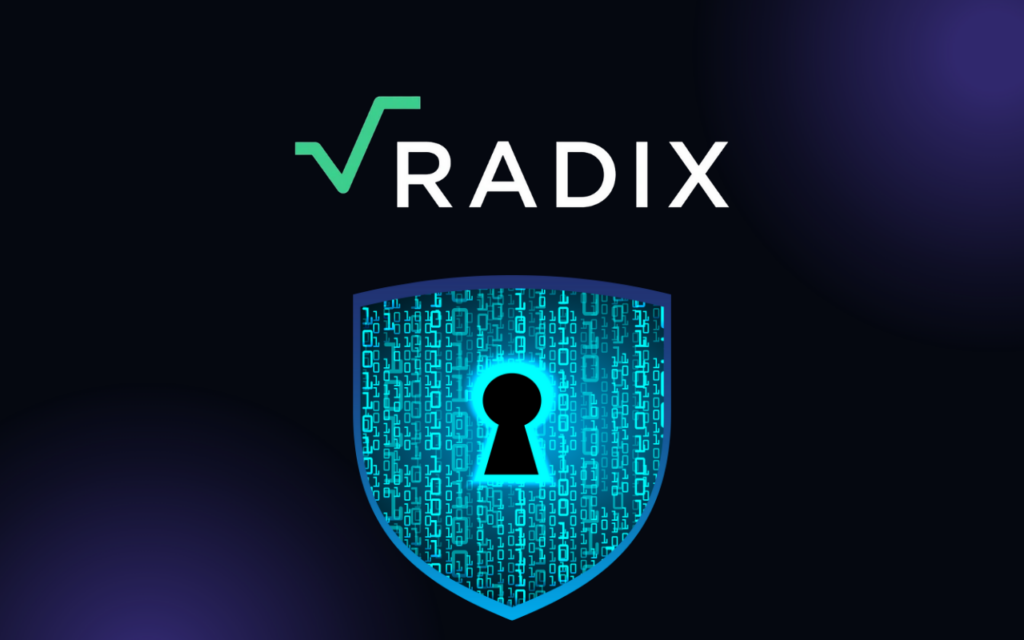Radix DLT: Revolutionizing DeFi with Speed, Security, and Scalability
Crypto News – Ethereum has paved the way for DeFi, but Radix DLT is positioned to become the next-generation DeFi powerhouse, offering a high-speed express train to the future of decentralized finance. Radix DLT serves as a new foundational layer designed specifically to ensure secure and scalable finance with decentralized attributes.
Radix’s inclusiveness opens the door to a wide range of DeFi solutions, introducing financial products and services that are currently unavailable in the DeFi landscape while fortifying the network against vulnerabilities and hacks.
Similar to other distributed ledger technology (DLT) networks, Radix records digital currency or cryptocurrency transactions. It also serves as a platform for software developers and programmers to contribute to the development of rules governing blockchain-based services in exchange for cryptocurrency payments.
Let’s delve deeper into Radix, exploring what it is, how it functions, and why you might consider using it.
What is Radix DLT?

Radix is a layer-1 decentralized finance solution with a comprehensive stack, offering exceptional scalability. Vital financial products and services like loans and money transfers are essential for the sustainability of decentralized financial systems. Radix empowers developers to build decentralized financial protocols using smart contracts, where once deployed, these rules become immutable to maintain decentralization. Users can trade, lend, invest, and more on platforms like Radix and Ethereum.
Founded in 2017 by Dan Hughes, Radix has its native token, XRD, which allows holders to participate in the proof-of-stake validation process and reap its rewards.
In 2023, Radix’s open-source network is set to launch its mainnet, ushering in the future of the DeFi ecosystem. As a testament to its potential, Radix is actively developing over 100 decentralized applications (dApps) even before its official launch.
How Does Radix DLT Work?
Radix is just one of many ecosystems facilitating the seamless interaction of thousands of assets. It offers several key features that enable swift, secure, and easy operation for both the network and its developers.
Radix addresses three primary challenges: scalability, privacy, and developer experience. Its technical architecture provides a solid foundation for building dependable DeFi applications.
The Cerberus Mechanism: Radix’s innovative Cerberus consensus mechanism forms the backbone of the system, enabling linear scaling with guaranteed security. Unlike proof-of-work and proof-of-stake methods, Cerberus combines Byzantine fault tolerance with a DAG-based ledger framework.
This simultaneous verification among node groups significantly accelerates transaction speeds during the consensus process. Each node group reaches consensus, and the DAG ledger manages ledger updates remotely for these groups.
Moreover, Radix employs a “composability” mechanism, allowing various dApps to seamlessly integrate and execute smart contracts. This enhances network speed by enabling DeFi services to incorporate multiple data sources and execute smart contracts instantly.
The Radix Engine: Similar to Ethereum’s EVM (Ethereum Virtual Machine), the Radix Engine is the computational logic on the Radix network that enables developers to create and run decentralized applications. It offers a component-based development framework for DeFi.
The Radix Engine takes a unique approach to token creation and issuance for dApps and protocols. Tokens are not created within smart contracts; instead, they are generated directly from the platform with essential parameters.
The upcoming Radix Engine v2 will simplify the creation of “smart contracts” on the Radix Engine platform. These smart contracts will handle financial assets and dApps using Radix Engine’s unique approach, based on assets and a system called FSM (Finite State Machine).
To streamline development, Radix Engine features its programming language called Scrypto. Scrypto simplifies the creation of a wide range of DeFi applications, assets, and features while mitigating the risks and complexities often associated with typical smart contract development tools.
The platform employs a straightforward and secure structure, allowing developers to build dApps using an asset-oriented crypto coding language. In the Radix ecosystem, everything, including identities, tokens, NFTs, and data, operates seamlessly, making it easier to code DeFi components such as transactions, exchanges, and liquidity pools.
Is Radix Safe to Use?

With DeFi applications like UniSwap surpassing the trading volumes of platforms like Coinbase, it’s crucial to focus on DeFi, and Radix deserves serious attention due to its solutions for speed, scalability, and security in blockchain DApp development.
Radix enables developers to execute contracts quickly and efficiently without the risk of hasty mistakes, bugs, or scalability issues, effectively addressing these common challenges.
Furthermore, Radix is the only technology that rewards developers for their contributions, making it a compelling choice for both developers and users.
Radix’s infinite scalability ensures that congestion or bottlenecks never occur, making it poised to support the $400 trillion global financial system.
If you’re considering investing in XRD, it’s advisable to use a trusted trading platform like https://nerdynator.com for a smooth and secure trading experience.
What are XRD Tokens?
Radix’s platform features a native currency called XRD, used to cover transaction fees, with node runners receiving these fees as compensation.
Transaction fees are assessed for token issuance, communication, and any operation modifying the ledger state. These fees are burned upon confirmation of the operation.
XRD holders have “delegated proof-of-stake” tokens, allowing them to actively participate in Radix’s proof-of-stake consensus system, as previously discussed.
It’s important to note that XRD tokens and EXRD tokens are not the same. EXRD serves as a temporary replacement for the Ethereum ERC20 token, which will eventually be converted into the Mainnet XRD coin.
Developers contributing to Radix’s protocols receive XRD tokens as compensation. The Radix network exclusively accepts XRD tokens for transactional fees.
The system’s tokens feature a 365-day controlled release function, ensuring controlled distribution. To combat inflation, Radix has imposed a limit, with only 24 billion XRD tokens currently in circulation, and not all are accessible to developers and users.
Over 10% of these tokens have been allocated to Radix’s charitable organization, the Radix Foundation, while the remaining 10% is retained by Radix to ensure its future growth.
Despite this cap, the positive news for users is that 50% of the total 24 billion cap is reserved for staking incentives, with 300 million tokens distributed annually.
Radix DLT Price Prediction
According to CoinmarketCap, Radix (XRD) has experienced consolidation following its peak of $0.14 in April, making it a neutral investment in terms of profit or loss. However, its price may surge in the near future as new developments and projects take shape on the platform.
Is Radix (XRD) a Good Investment?
While blockchain technology garners significant attention, activity across various associated protocols remains relatively low. Platforms like Bitcoin and Ethereum are grappling with high fees and slow transaction processing times.
Radix aims to address this scalability challenge by fundamentally altering how records are stored within the system.
What is the Future of Radix DLT?
The planned mainnet launch of Radix DLT in 2023 has the potential to significantly impact the future of decentralized finance if it can achieve its ambitious goals.
Radix has built a robust technological stack specifically tailored for DeFi, but success will hinge on ecosystem adoption. Development efforts must focus on enhancing functionality and documentation to attract builders.
User adoption is another critical aspect, with interfaces to cryptocurrency trading platforms and on-ramps being key to bringing users into the DeFi ecosystem. Legal compliance initiatives may also provide access to major banks.
Increased usage, coupled with rising interest in staking and ownership rights, is likely to boost RADIX token value and stability, creating a positive feedback loop that attracts more users and experts.
If all goes according to plan, Radix’s innovative approach could position it as a leading DeFi hub in the next five years. However, competition is fierce, with platforms like Polkadot, Cosmos, and Polygon vying for DeFi supremacy. Nevertheless, the future of DeFi, powered by scalable, secure, and user-friendly technologies like Radix, holds significant promise.
















Leave a comment